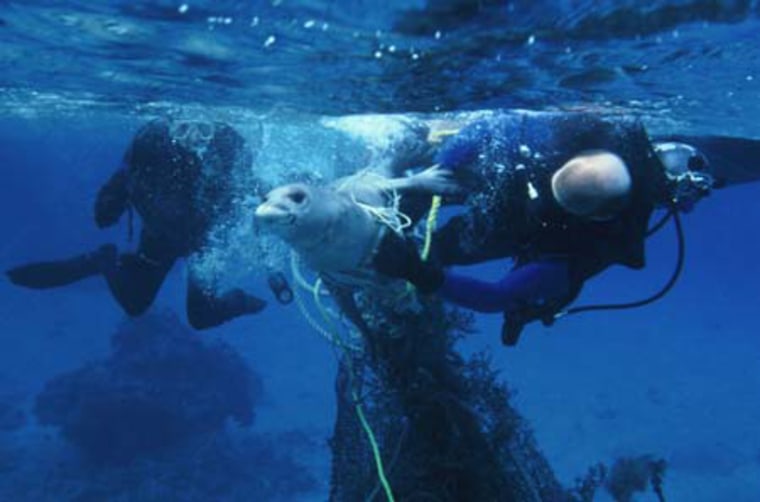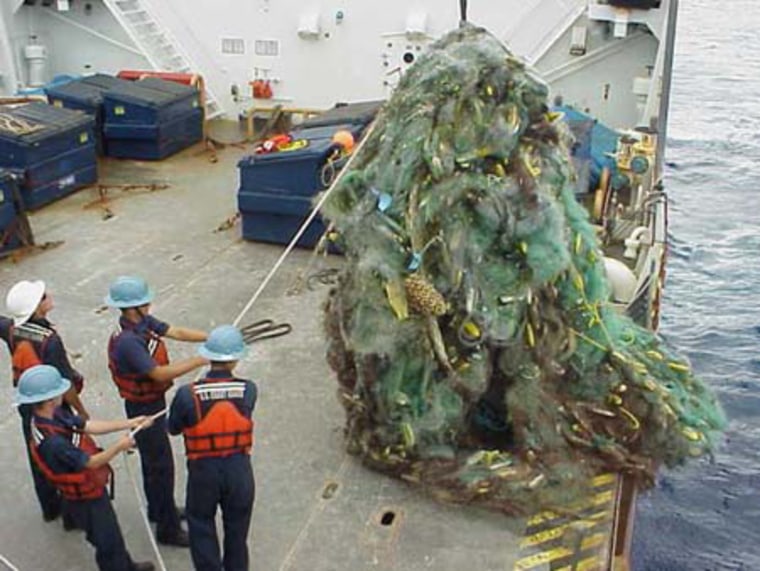Researchers using satellites and aircraft have located a concentration of lost or abandoned fishing nets that drift through the oceans posing a danger to fish and other wildlife, the National Oceanic and Atmospheric Administration said Friday.
Now that they have confirmed the location of the nets, the researchers are trying to determine the best way to clean them up and to arrange funding for the effort, said James Churnside, a researcher with the NOAA Environmental Technology Laboratory in Boulder, Colo.
“There is a lot more trash out there than I expected,” he said.
The project got underway when NOAA officials asked if technology being used to track fish could also be used to locate debris.
Ocean winds and currents can concentrate drifting materials, so the scientists used satellites to study the winds and currents to determine areas where concentrations can occur — locating one such area in the Pacific Ocean north of Hawaii.
They confirmed their theory, flying out to the area in a NOAA P-3 aircraft in late March and early this month.
They found a large concentration of drifting nets, balls of fish net up to 30 feet across and other debris in an area that forms a boundary between northern waters and southern waters.

Along that front is a region of relatively high biological activity, Churnside said. “A lot of turtles hang out there,” he said, along with dolphins, tuna and billfish.
Churnside said the nets were found using a digital imaging system aboard the aircraft flying from Hawaii.
Most modern nets are made from synthetic materials which decay extremely slowly. They can continue to drift for years and the researchers said many of them get caught on coral reefs, where they both entangle fish and damage the fragile coral.
Churnside said that during three days of study, about 2,000 individual pieces of debris were seen including at least 100 that were identified as nets or pieces of net. A number were balls of net up to 30 feet across.
“One piece of driftnet that was still stretched out, and presumably still fishing, was 200-300 meters (650-975 feet) long,” Churnside said.
Hundreds of thousands of whales, birds, sea turtles and fish die each year when they get tangled in fishing gear, much of it hanging from huge trawlers that mistakenly catch marine life they're not fishing for.
